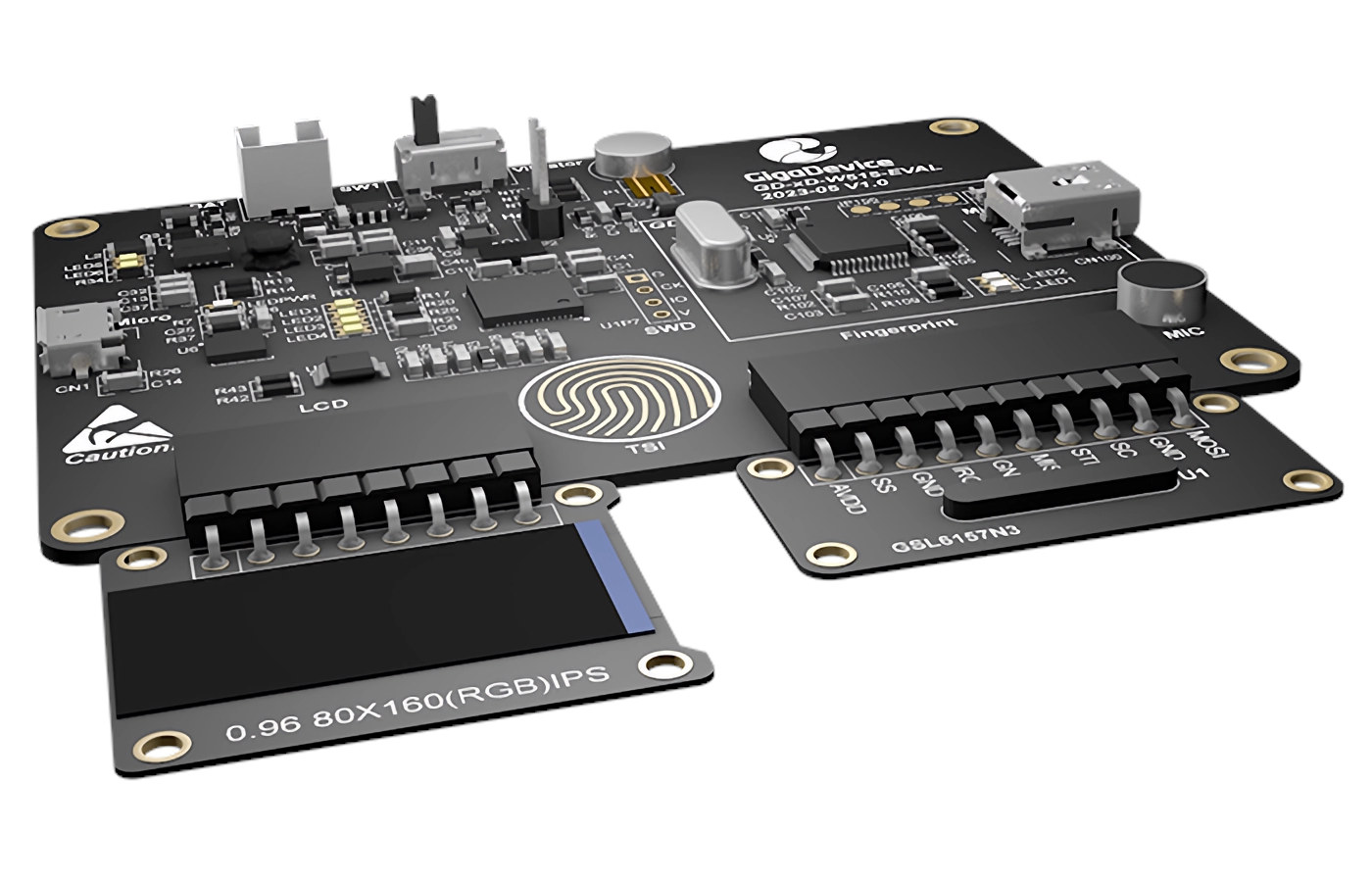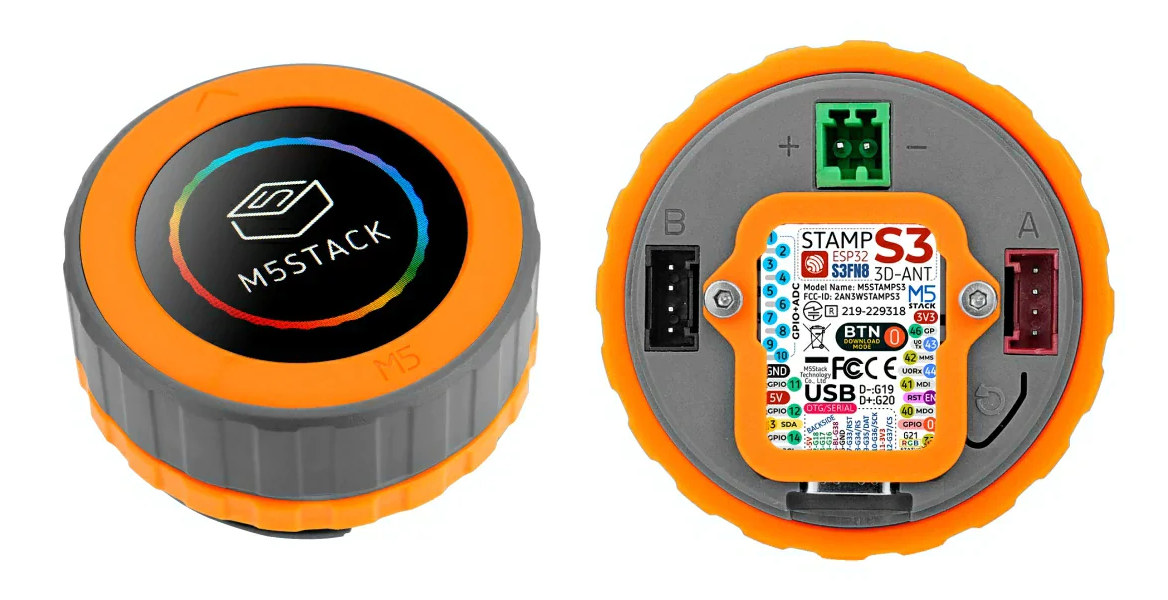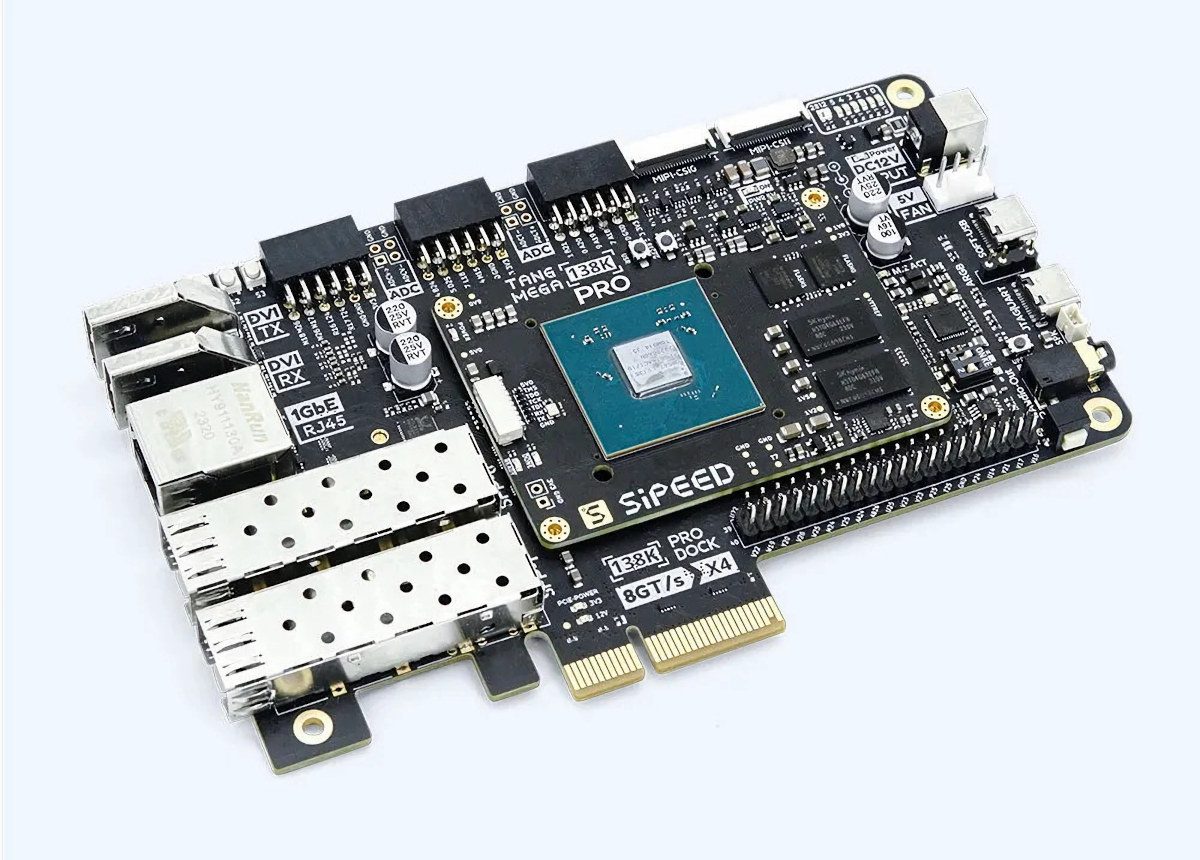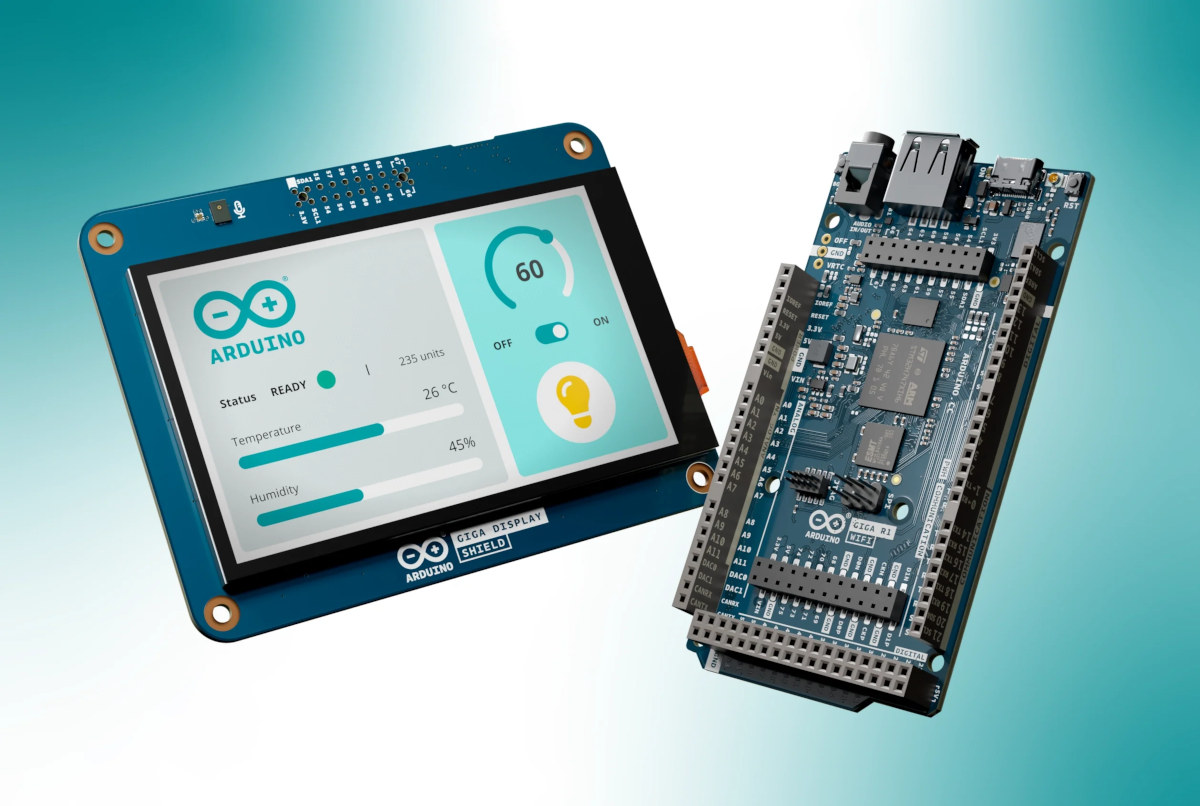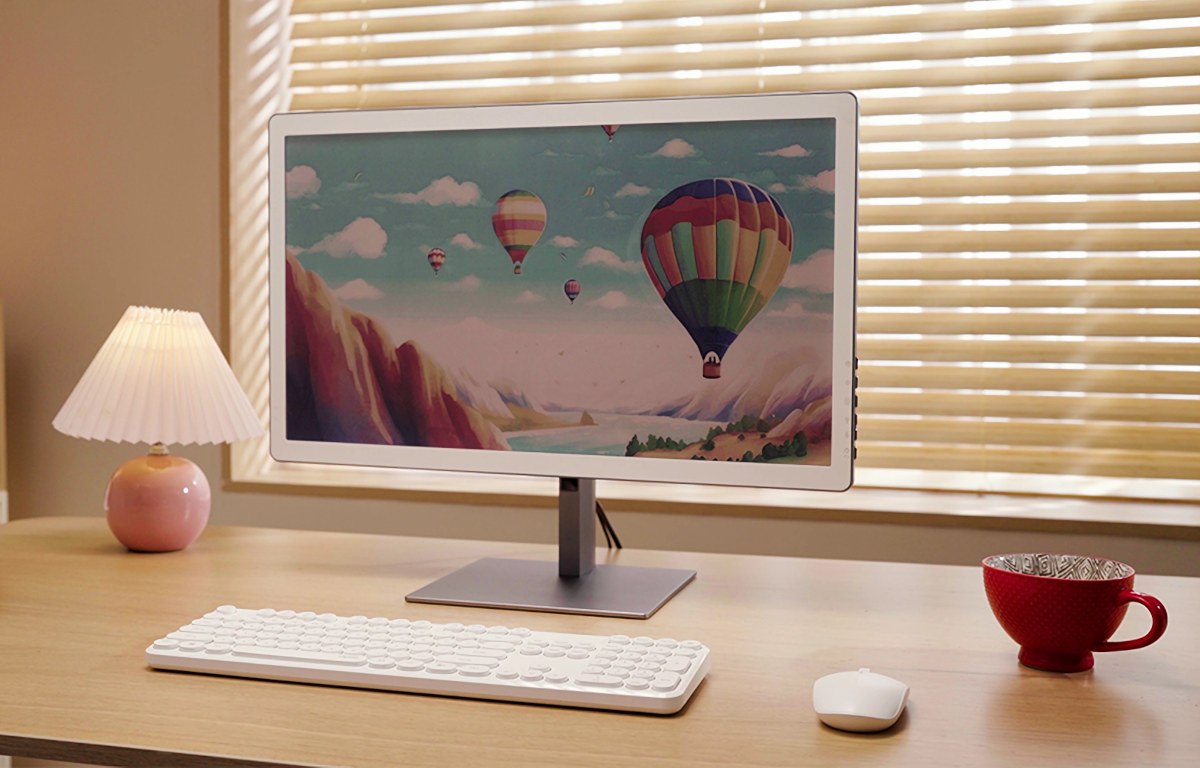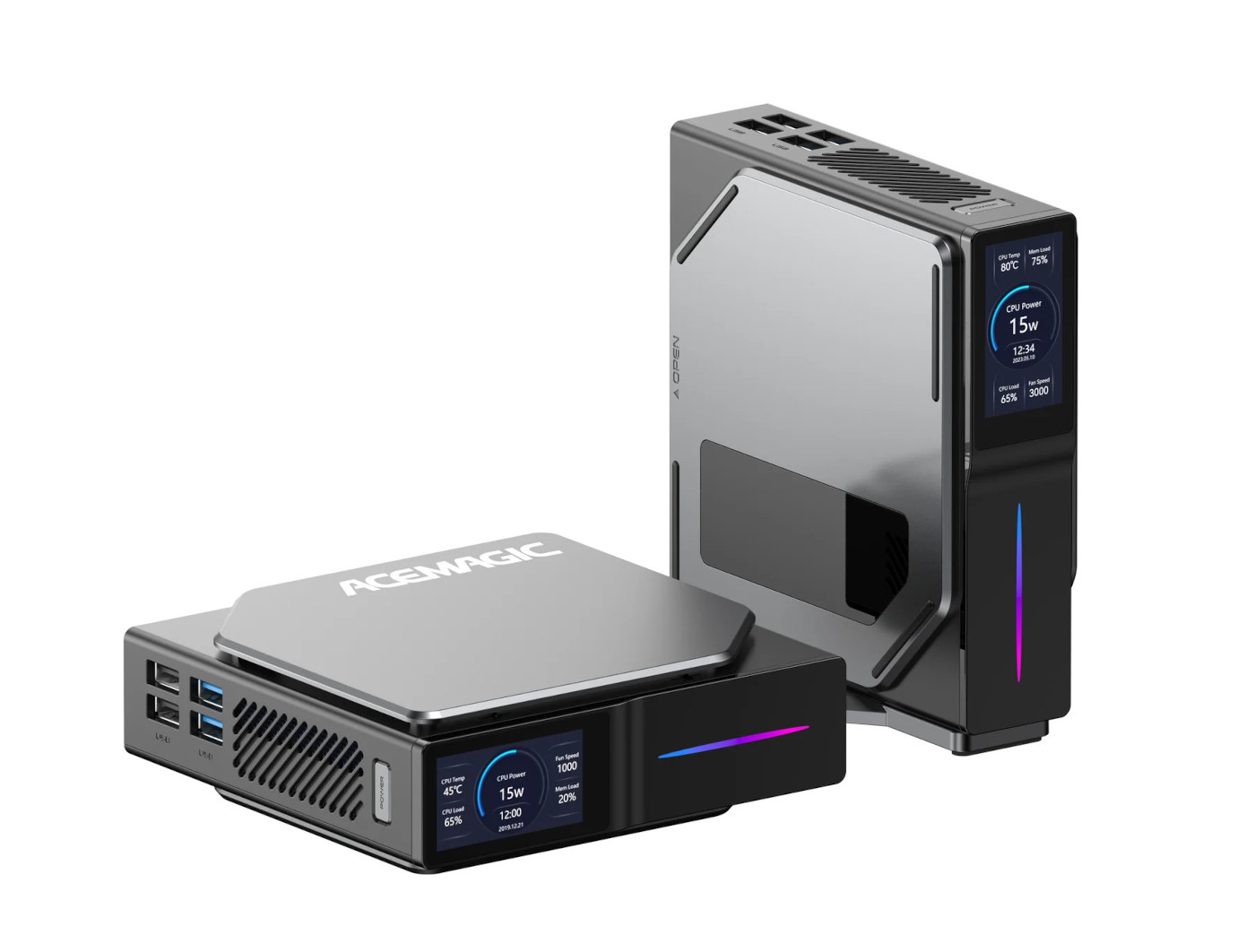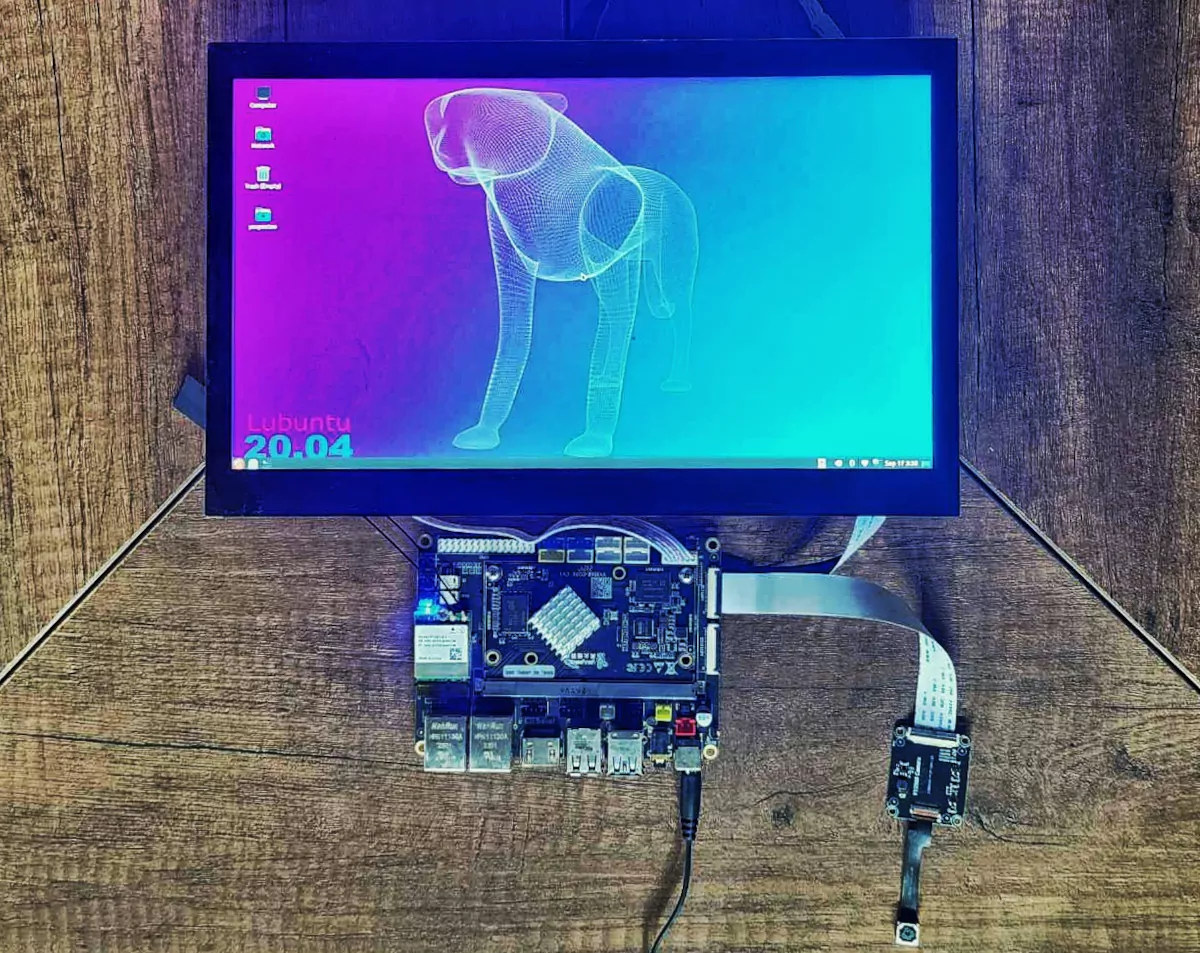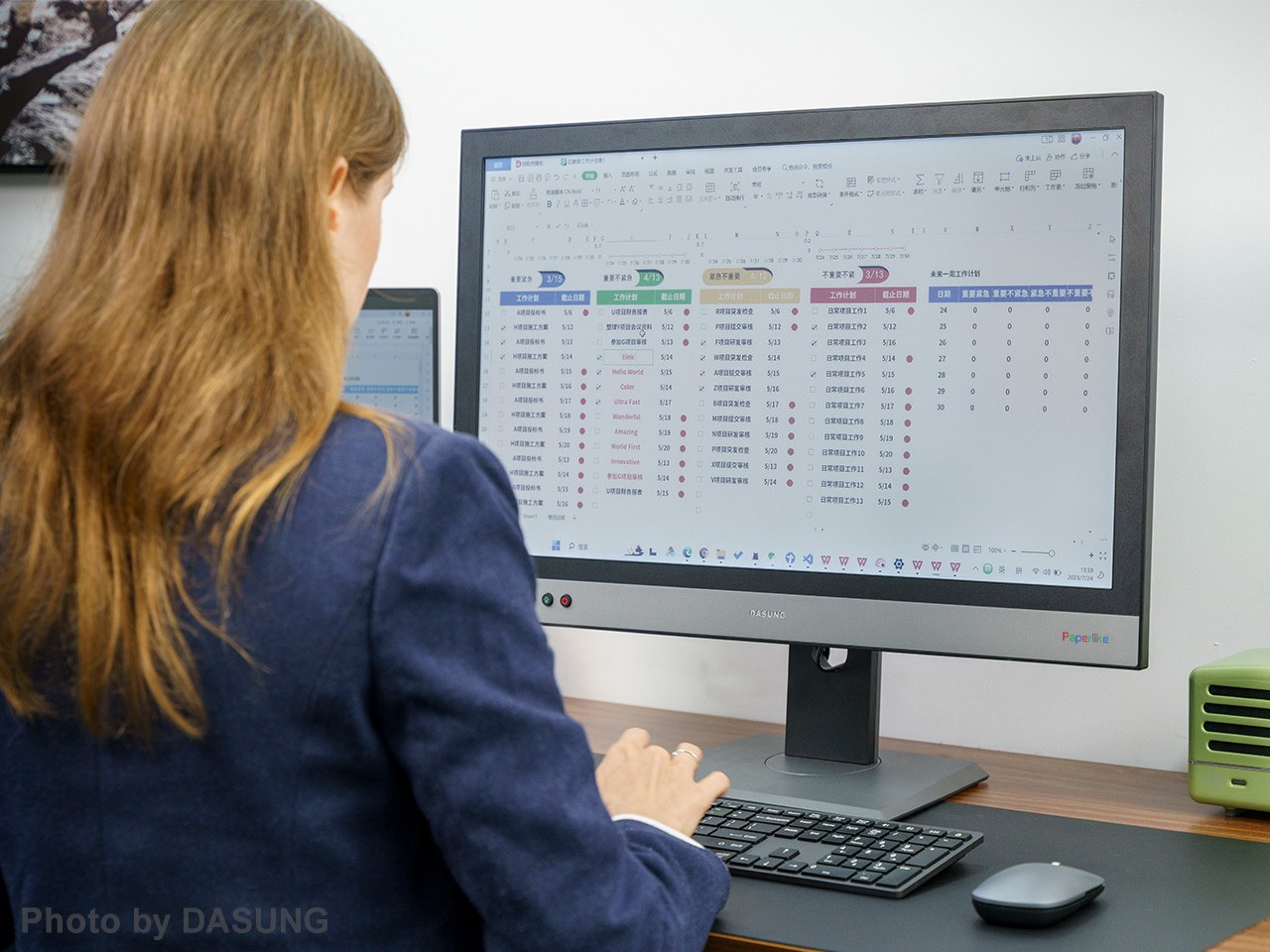GigaDevice GD-xD-W515-EVAL is a new “all-in-one” Cortex-M33 evaluation kit comprised of a GD32W515 mainboard, a fingerprint board, and an LCD board powered by either a battery or the Mini-USB interface of the GD-Link programmer. The devkit is mainly used to evaluate various chips from the company, namely the 180 MHz GD32W515PIQ6 Cortex-M33 microcontroller, the GD25Q128E SPI NOR flash, the GSL6157 capacitive fingerprint Sensor, the GD30BC2416 battery management IC, and the GD30LD1002 power management chip. GigaDevice GD-xD-W515-EVAL board specifications: MCU – Gigadevice GD32W515PIQ6 Core – Arm Cortex-M33 microcontroller clocked at up to 180 MHz with Arm TrustZone support Memory – 448KB SRAM Storage – 2048KB flash Wireless – 2.4 GHz WiFi 4 (802.11b/g/n), but somehow not used in the development board… I/Os – Up to 43x GPIOs, 3x USART, 2x I2C, 2x SPI, USB 2.0 FS, I2S, etc… Package – QFN56 Storage – 128Mbit SPI NOR Flash (GD25Q128E) Display – 0.96-inch […]
M5Dial – An ESP32-S3 smart rotary knob with a touchscreen display
M5Stack M5Dial is a WiFi and Bluetooth-connected smart rotary knob with a round 1.28-inch touchscreen TFT display powered by an ESP32-S3 board, more precisely, the M5Stamp S3 IoT module. The user-programmable device comes with a rotary encoder recording the position and direction of the knob, an RFID module, an RTC, a buzzer, and under-screen buttons, as well as two Grove connectors for expansion enabling all sorts of projects. M5Dial specifications: Wireless MCU module – M5Stack M5Stamp S3 with SoC – Espressif Systems ESP32-S3FN8 dual-core 32-bit Xtensa LX7 microcontroller with AI vector instructions up to 240MHz, RISC-V ULP co-processor, 512KB SRAM, 2.4GHz WiFi 4 (802.11b/g/n), Bluetooth 5.0 BLE + Mesh, 8MB flash 2.4GHz 3D antenna USB – 1x USB Type-C port Expansion connectors for I/Os such as SPI, I2C, UART, ADC, and more Display – 1.28-inch TFT display with 240×240 resolution using GC9A01 driver, and FT3267 capacitive touchscreen controller RFID – […]
Sipeed Tang Mega 138K Pro Dock features GOWIN GW5AST FPGA + RISC-V SoC
Sipeed has launched another FPGA board part of their Tang family with the Tang Mega 138K Pro Dock powered by a GOWIN GW5AST SoC with 138K logic elements as well as an 800 MHz AE350_SOC RISC-V hardcore unit, and featuring a PCIe 3.0 x4 interface, DVI Rx and Tx, two SFP+ cages, a Gigabit Ethernet RJ45 port, and more. We’ve previously seen companies like AMD (Xilinx) and Microchip produce FPGA SoCs with hard cores such as the Zynq Ultrascale+ family (4x Cortex-A53) or the PolarFire MPSoC (4x 64-bit SiFive U54 RISC-V cores), but it’s the first time I see GOWIN introduce an FPGA + RISC-V SoC, as all the previous parts that came to my attention were FPGA devices. Sipeed Tang Mega 138K Pro Dock specifications: System-on-Module – Sipeed Tang Mega 138K Pro SoC FPGA – GOWIN GW5AST-LV138FPG676A with 138,240 LUT4 1,080 Kb Shadow SRAM (SSRAM) 6,120 Kb Block SRAM […]
Arduino GIGA R1 WiFi board gets touchscreen display shield
The Arduino GIGA Display Shield is a 3.97-inch RGB touchscreen display designed for the Arduino GIGA R1 WiFi board introduced a few months ago with an STM32H7 dual-core Cortex-M7/M4 microcontroller and a Murata 1DX module for WiFi 4 and Bluetooth 5.1 connectivity. Besides featuring an 800×480 touchscreen display, the new shield offers some other features such as an MP34DT06JTR digital microphone, a Bosch BMI270 six-axis IMU, a 20-pin Arducam camera connector, and an RGB LED. Arduino GIGA Display Shield (ASX00039) specifications: Display – 3.97-inch touchscreen display with 800×480 resolution (model: KD040WVFID026-01-C025A), 16.7 million colors, 5-point touch, connected over I2C Camera I/F – 20-pin ArduCam camera connectors Sensors Bosch SensorTech BMI270 6-axis IMU with 16-bit tri-axial gyroscope and a 16-bit tri-axial accelerometer STMicro MP34DT06JTR MEMS microphone Misc -1x RGB LED (I2C) Supply Voltage – 3.3V Dimensions – 106 x 80 mm The new shield can be mounted to the GIGA R1 […]
BIGME B251 – An All-in-One color E-Ink computer and standalone monitor (crowdfunding)
The BIGME B251 is a 25.3-inch color E-Ink monitor that is also sold as an All-in-One (AIO) PC with a 12th generation Core-i5 processor, 16GB RAM, and a 1TB SSD. The B251 is based on the same E-ink Kaleido 3 color display with 3200×1800 resolution as the DASUNG E-Ink color monitor, but BIGME included some extra features such as a cold/warm dual front light and voice control. It’s also the first time I’ve seen an AIO PC with an E-Ink display. BIGME B251 key features and specifications: All-in-one model SoC – Unnamed 12th Generation Intel Core-i5 Alder Lake processor System Memory – 16 GB RAM Storage – 1TB SSD OS – Windows 11 Display – 23.5-inch color E-ink Kaleido 3 color screen with 3200 x 1800 resolution, xRapid-refresh Tech, adjustable image quality, warm and cold dual front light, support for landscape and portrait mode orientation, Video Input – HDMI, mini […]
ACEMAGIC S1 – A Processor N95 mini PC with a built-in LCD information display
ACEMAGIC S1 is a mini PC powered by an Intel Processor N95 Alder Lake-N processor whose main highlight is its LCD information display that shows CPU and memory usage, CPU temperature, fan speed, and other information, and works in both portrait and landscape modes. The mini PC also comes with 16GB RAM and an SSD with either 512GB or 1TB capacity, as well as two HDMI video outputs up to 4K resolution, two gigabit Ethernet ports, WiFi 6 and Bluetooth 5.2 wireless connectivity, and four USB ports. ACEMAGIC S1 specifications: SoC – Intel Processor N95 quad-core Alder Lake N-series processor @ up to 3.4 GHz (Turbo) with 6MB cache, 16EU Intel HD graphics @ 1.2 GHz; TDP: 15W (up to 20W) System Memory – 16GB RAM Storage – 512GB or 1TB “dual-channel” M.2 SATA+NVMe SSD (whatever that means) Video Output – 2x HDMI ports up to 4Kp60; dual independent display […]
Review of Youyeetoo Rockchip RK3568 SBC with Lubuntu 20.04 and the RKNPU2 AI SDK
We’ve already reviewed the Rockchip RK3568-power Youyeetoo YY3568 SBC with Android 11 – and listed the specifications and checked out the hardware kit – in the first part of the review. We now had time to switch to Lubuntu 20.04, perform some basic tests, and also have a closer look at the RKNPU2 AI SDK for the built-in 0.8 TOPS AI accelerator found in the Rockchip RK3568 SoC. Installing Ubuntu or Debian on YY3568 SBC The company provides both Debian and Ubuntu images for the YY3568 SBC with different images depending on the boot device (SD card or eMMC flash) and video interface used (DSI, eDP, HDMI). Our YY3568 “Bundle 5” kit comes with an 11.6-inch eDP display so we’ll select the “Ubuntu 20” image with edp in the file name. The RKDevTool program is used to flash Linux images and it’s the same procedure as we used with Android […]
DASUNG introduces the world’s first color E-ink monitor (Crowdfunding)
Just a couple of years ago, we would have laughed at the idea of getting an E-ink monitor, because most displays were still in black and white only, larger displays were prohibitively expensive, and nobody wanted to wait for several seconds to get a full display refresh. But there’s been some good progress in recent years with color displays, faster refresh rate, and prices coming down somewhat which has led to the launch of devices such as the Onyx BOOX Tab Ultra C 10.3-inch color E-Ink Android tablet and a range of color eReaders such as the PocketBook Color. But DASUNG is going further with the launch of the world’s first color E-ink monitor. DASUNG E-Ink color monitor specifications: 23.5-inch color E-ink Kaleido 3 color screen with 3200 x 1800 resolution 4096 colors through DASUNG X-Color Filter “Ultra-fast Turbo Refresh Tech” Optional frontlight and/or curved display (depends on model) Landscape […]


